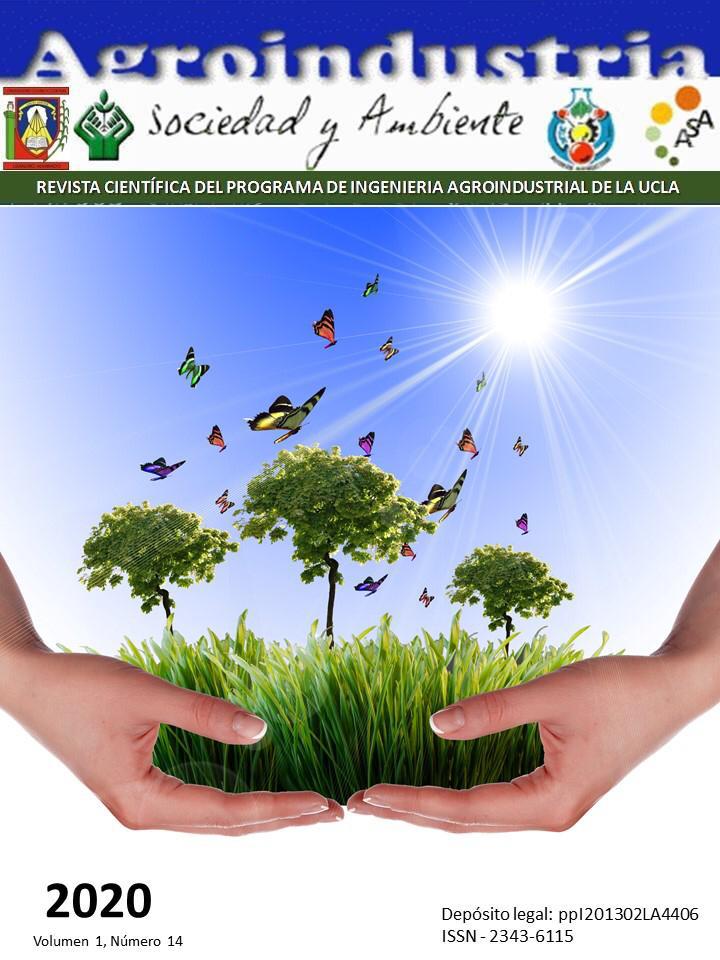Protocol proposal for obtaining organic fertilizer from microalgas
Keywords:
Biofertilization, mineral nutrition, microorganisms, sustainabilityAbstract
The use of biofertilizers constitutes an alternative for the sustainable management of soils and the fertilization of crops, considering the contribution of macro and micronutrients essential for the development of the plants, their use would allow minimizing the production costs and reducing the environmental impact caused by the excessive use of chemical fertilizers. Based on this, the use of Chlorella sp. and Scenedesmus sp for the production of biofertilizers, for this the chemical characterization of the microalgae was carried out, for which the parameters pH, EC, content of the macronutrients N, P, K, Ca, Mg, S and micronutrients B were determined, Zn, Cu Fe and Mn. The results obtained show that the microalgae have a high potential as a fertilizer due to the high nutrient content, however there is currently no methodology for efficient use at the field or greenhouse level, so a protocol for propagation, isolation is proposed, massification, scaling and use of a biofertilizer based on Chlorella sp and Scenedesmus sp.
Downloads
References
Barreto, A. y Velasco, L. (2014). Aislamiento y cultivo de microalgas bentónicas del caribe colombiano bajo diferentes condiciones de temperatura. Intropica 9: 23-32.
Battacharyya D., Zamani Babgohari M., Rathor P. and Prithiviraj B. (2015) Seaweed extracts as biostimulants in horticulture. Sci Hort 196: 39–48.
Bharathiraja, B., Chakravarthy, M., Kumar, R. R., Yogendran, D., Yuvaraj, D., Jayamuthunagai, J. and Palani, S. (2015). Aquatic biomass (algae) as a future feed stock for bio-refineries: A review on cultivation, processing and products. Renewable and Sustainable Energy Reviews, 47: 634-653.
Burgos-Rada, C.A, Ramírez-Merlano, J.A. y Jiménez-Forero, J.A (2016). Uso de fertilizante comercial en la cinética celular de Desmodesmus opoliensis (Chlorophyceae), reporte preliminar. Orinoquia, 20(2): 18-25
De Oliveira, J., Mógor, G. e Mógor, Á. (2013). 13937-Produtividade de beterraba em função da aplicação foliar de biofertilizante. Cadernos de Agroecologia, 8(2).
Elarroussia, H., Elmernissia, N., Benhimaa, R., El Kadmiria, I. M., Bendaou, N., Smouni, A. and Wahbya, I. (2016). Microalgae polysaccharides a promising plant growth biostimulant. J. Algal Biomass Utln, 7(4): 55-63.
García Orellana, Y., Soto, G., Tafur, V., Simbaña, A., Tello, E., & Brito, J. J. (2016). Efecto de un fertilizante orgánico microalgal en la germinación y crecimiento de plántulas de albahaca (Ocimum basilicum L.). Revista Unellez de Ciencia y Tecnología, 34, 33-39.
Gilabert De Brito, J., López De Rojas, I.. Roberti, R. 1990. Análisis de suelo para diagnóstico de fertilidad.In: Manual de métodos y procedimientos de referencia. FONAIAP-CENIAP. Maracay. Cap.4.1-5.1 Serie. D.Nº 26.
González, L. (2010). Influencia de la deficiencia de nitrógeno y fósforo en las interacciones competitivas entre Chlorella vulgaris y Scenedesmus acutus (tesis de maestría). Bogotá: Departamento de Biología, Facultad de Ciencias, Universidad Nacional de Colombia, 65.
Kirrolia, A., Bishnoi, N. and Singh, R. (2012). Effect of shaking, incubation temperature, salinity and media composition on growth traits of green microalgae Chlorococcum sp. J. Algal Biomass Utln. 3(3): 46-53.
Lu L, Wang X, Xu M. Effect of Zinc and composting time on dynamics of different soluble copper in chicken manures. Agricultural sciences in China. (2010). 9(6): 861-870.
Marschner H. (2012) Mineral nutrition of higher plants, 3rd edn. Academic Press, London.
Mogollón, J. P., Martínez, A., & Torres, D. (2016). Efecto de la aplicación de vermicompost en las propiedades biológicas de un suelo salino-sódico del semiárido venezolano. Bioagro, 28(1): 29-38.
Nayak, M., Thirunavoukkarasu, M. and Mohanty, R. C. (2016). Cultivation of freshwater microalga Scenedesmus sp. using a low-cost inorganic fertilizer for enhanced biomass and lipid yield. The Journal of general and applied microbiology, 62(1): 7-13.
Ortiz-Moreno, M. L., Cortés-Castillo, C. E., Sánchez-Villarraga, J., Padilla, J. y Otero-Paternina, A. M. (2012). Evaluación del crecimiento de la microalga Chlorella sorokiniana en diferentes medios de cultivo en condiciones autotróficas y mixotróficas. Orinoquia, 16(1): 11-20.
Park, J. B. K., Craggs, R. J. and Shilton, A. N. (2011). Recycling algae to improve species control and harvest efficiency from a high rate algal pond. Water research, 45(20): 6637-6649.
Plaza, B. M., Gómez-Serrano, C., Acién-Fernández, F. G. and Jimenez-Becker, S. (2018). Effect of microalgae hydrolysate foliar application (Arthrospira platensis and Scenedesmus sp.) on Petunia x hybrida growth. Journal of Applied Phycology, 30(4): 2359-2365.
Ramos, E. y Terri, E. (2014). Generalidades de los abonos orgánicos: importancia del bocashi como Alternativa nutricional para suelos y plantas. Cultivos tropicales 35(4):52-59.
Raposo, M.F.D.J. and. Morais R.M.S.C. (2011). Chlorella vulgaris as soil amendment: influence of encapsulation and enrichment with rhizobacteria.
Rawat I., Ranjith-Kumar R., Mutanda T. and Bux F. (2011). Dual role of microalgae: Phycoremediation of domestic wastewater and biomass production for sustainable biofuels production. Applied Energy 88 (10): 3411-3424.
Ronga, D., Biazzi, E., Parati, K., Carminati, D., Carminati, E. and Tava, A. (2019). Microalgal biostimulants and biofertilisers in crop productions. Agronomy, 9(4), 192.
Rubio, D. (2019). Evaluación de carotenoides y lípidos en la microalga Scenedesmus dimorphus a escala laboratorio. Mutis, 9(1), 20-28.
Tarraf S., Talaat I.M., El-Sayed A.E.K. y Balbaa LK (2015). Influence of foliar application of algae extract and amino acids mixture on fenugreek plants in sandy and clay soils. NusantBiosci 7(1):33–37.
Tüzel, Y., Varol, N., Öztekin, G. B., Ekinci, K., & Merken, O. (2016). Effects of composts obtained from olive oil production wastes on organic tomato seedling production. In III International Symposium on Organic Greenhouse Horticulture. 217-224.
Uysal O., Uysal, F.O and Ekinci, K. (2015). Evaluation of Microalgae as Microbial Fertilizer. European Journal of Sustainable Development, 4(2): 77-82.
Weldeslassie, T., Naz, H., Singh, B., & Oves, M. (2018). Chemical contaminants for soil, air and aquatic ecosystem. In Modern Age Environmental Problems and their Remediation. Springer, Cham.1-22.
Published
How to Cite
Issue
Section




